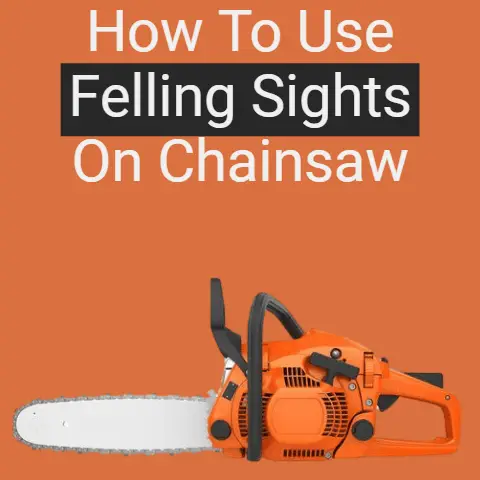How To Cut Fallen Trees With Chainsaw? (Explained)
A chainsaw is a mechanical cutting power-driven tool featuring teeth set on its chain.
It moves around the blade edge.
Using this tool, chainsaw should be done with care, if not you will damage the tool and end up with an injury.
Thus, before taking a chainsaw to cut fallen trees, familiarize yourself with the right things to bring them down completely.
Cutting fallen trees is easy?
A fallen tree may become a huge mess.
However, using the right gear and techniques allows for turning the same fallen trees into fuel for the next year.
Trees drop their large limbs in storms, age, or get a disease that may fall.
You cannot preserve the tree’s health with a fallen limb.
The only work is to cut the fallen trees using a chainsaw.
The ideal tool to cut fallen trees and limbs into pieces is the chainsaw.
The chainsaw can be cut into manageable size pieces of wood to use as firewood.
Verify the fallen tree branches’ position
A fallen tree experiences saw-pinching areas such that the top log comes under compression, while the bottom is in tension.
Accessing the log gives you a chance to handle it properly.
Note, where the branch has fallen is it on the ground in full resting, or is it raised on one end off the ground.
Cut side branches
Cut the side branches that are not on the ground fully.
Normally, work from the main limb seen in the upper end and the one attached to the trunk.
Reach to the trunk that is against the ground.
Stand to the main branch opposite side and cut the side branches.
Later cut from the branch underside so that it does not whip to hit you.
The release cut
A fallen tree mostly bends a branch or a sapling under it.
The bent sapling or branch contains stored energy in a tremendous amount.
If you crosscut the wood fibers, you can release the energy.
Deal safely, by making parallel cuts in a series on the inside and shaving the wood down.
Make a vertical small cut on top, but avoid severing the branch.
The pole will release on its own.
Avoid the tip
Use the chainsaw and cut three-fourths using a log that is on the ground in a resting position.
Go down from the limb top towards the ground and make around 16 inches cuts as per the wood length that is suitable for your fireplace to accommodate.
The stance
As a chainsaw bar bottom encounters a log, it will pull you towards the log.
Like the top of bar contact, it pushes you away.
So be prepared, you may get knocked on your butt.
A person using the right hand should stand with the left foot forward and the right back.
Bend your knees while your pivot the saw through the log.
Be careful to swing the cut, but not across your boot toe to hit your leg.
Roll the Branch
Roll the large branch fallen over to the opposite side and meet the cuts made.
The straightforward technique for cutting it straight is to hit the ground with a chainsaw.
Finishing the Project
While finishing, a large branch is supported on both ends.
Now you know cutting a fallen tree on the ground using a chainsaw and you can clean up easily.
Things you need
- Logging tall boots to give support to your ankle and traction as the work is tough.
Cutting safely is possible only if you can stand firmly. - Chainsaw chaps are essential.
If you cut into your leg, the chain-stopping fabric snarls the clutch of the saw before the chain does some damage. - A forestry helmet safeguards your ears, eyes, and head.
Initially, it seems a burden but if are swatted by a falling branch in your face once, you will be glad to wear it ever after. - Logging gloves featuring chain-stropping fabric are helpful in cold weather.
A cant hook is a tool time-honored to turn the logs positioning.
It is helpful for your back.
A few dos and don’ts
Dos
#1
Do use the right equipment.
You can chop down safely the fallen tree using an axe, but a chainsaw is an ideal tool.
Use a 20 to 24-inch bar to cut large trees and a 16 to 18-inch bar for small to medium trees.
Make a note that larger chainsaws weigh more and cause arm and shoulder fatigue.
Before firing a chainsaw, familiarize its use, ensure it is in working order, and fill with oil and fuel.
#2
Do know your limitations and limits.
Using the chainsaw for the first time means you have to be extra careful.
Wear the safety gear or leave it to a professional to handle.
If not, have a professional by your side and know your limitations.
Felling a tree is not a complicated process; it requires focus, planning, and caution.
Wait for milder conditions and do not attempt cutting while it is raining or windy, even if the tree is fallen
Don’ts
#1
Do not get careless until the final cut.
Move from your notch to the opposite side of the tree.
Place the chainsaw and leave it running to cut the fallen big limbs, but lock the chain brake.
Use a hammer or mallet and pound the wedges, such that it is behind the chainsaw blade.
As the tree is fallen already, there is no need for the felling wedges.
#2
Do not ignore safety gear. Foregoing safety gear is not appropriate.
Safety should be your top priority, no matter, if you face any problems or not.
The gear list includes a long-sleeved shirt and pants, sturdy, closed boots or shoes, hardhat, goggles covering eyes, earmuffs or plugs to reduce sound, and work gloves.
Wrapping up
Cutting down fallen trees is best with a chainsaw.
Even if you are skilled, take another person with you in case you are injured.
Do not work in damp conditions using an electric chainsaw, besides the ford away from the cutting area.
Familiarizing and practicing helps with using a chainsaw, so do not ignore the dos and don’ts.





